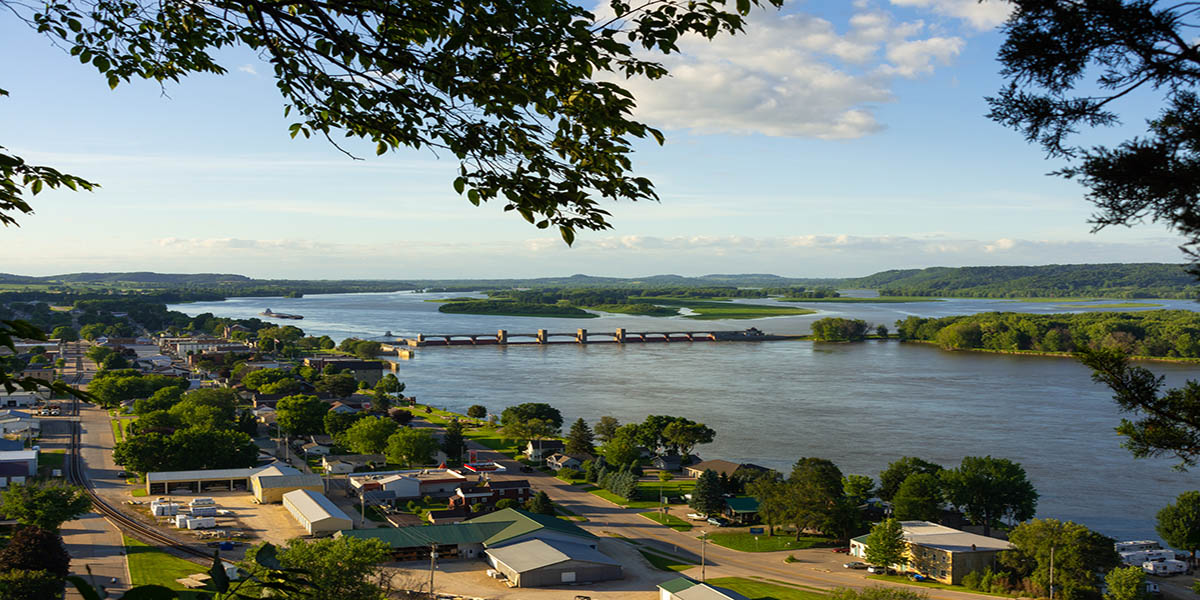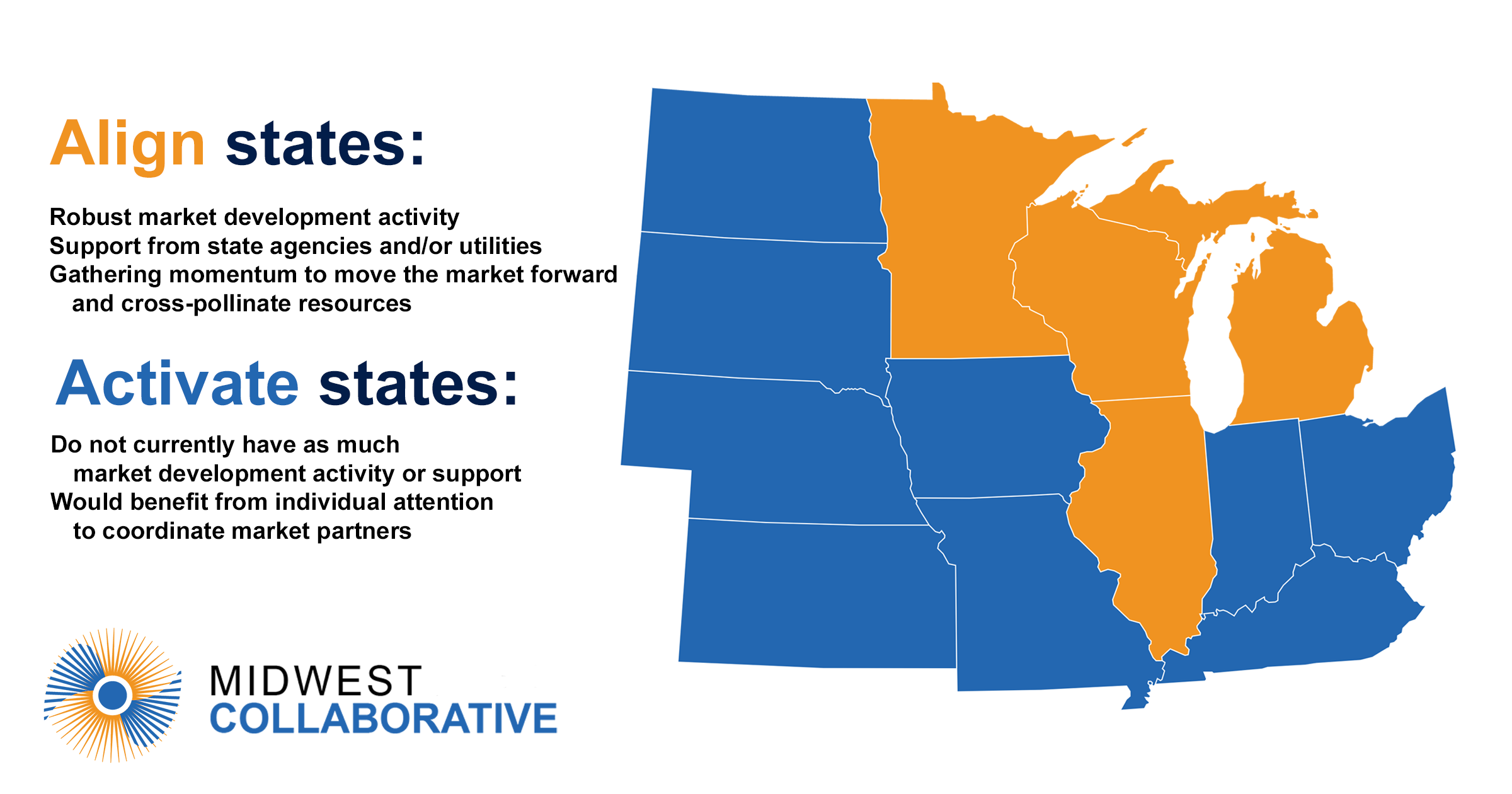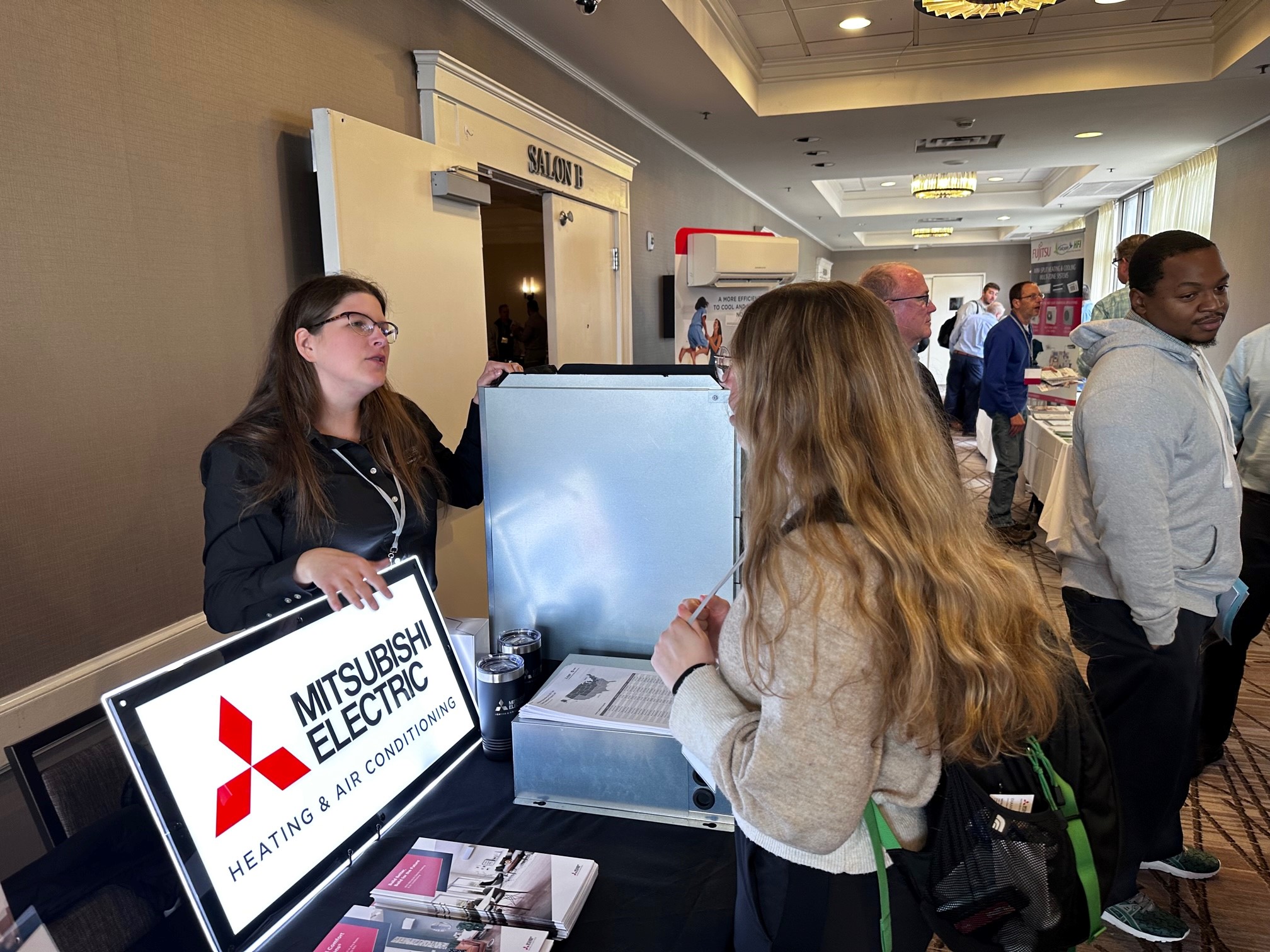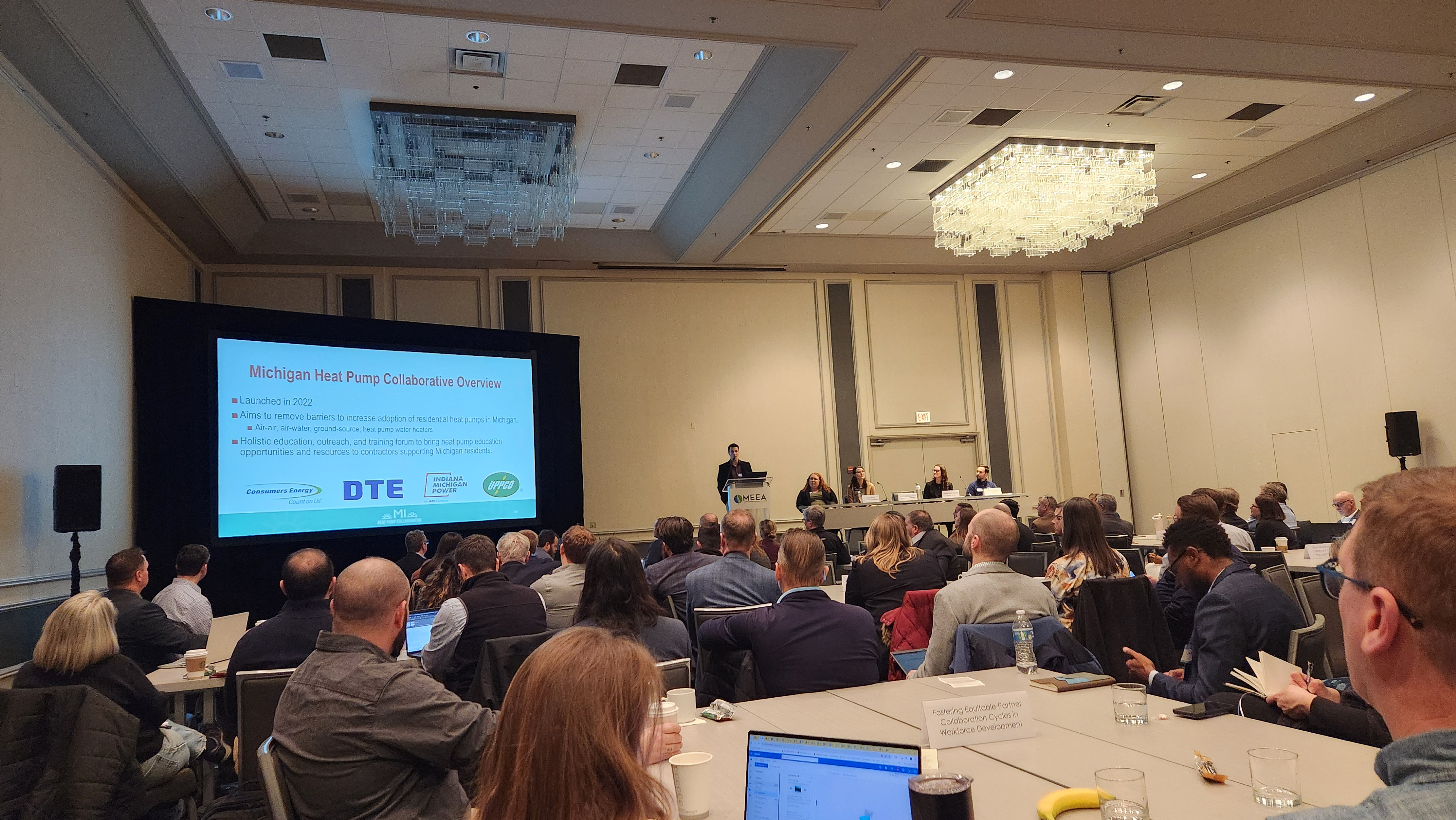
Align & Activate: The power of state and regional collaboratives to drive market transformation
As we stand in 2024, the residential air-source heat pump (ASHP) market is in a period of intense change. Many market factors are changing at once:
- Technology: Innovations in product development, controls, and installation methods have made heat pumps more effective than ever. Regulations and policy: Governments and many utilities have begun to shift their efforts toward beneficial electrification, bolstered by new funding from the Inflation Reduction Act.
- Supply chain: Manufacturers are ramping up domestic production capacity. Meanwhile, distributors must assume some risk to keep ASHPs in stock.
- Popular support: Consumer education campaigns are becoming more prevalent. As homeowners learn about the benefits of ASHPs, demand will grow.
- Workforce: We need more qualified, confident contractors who can build trust among consumers and ensure quality installations.
Utility resource acquisition programs are not equipped to handle these challenges alone. The Center for Energy and Environment (CEE), Slipstream, and our partners have been developing a framework in the Midwest for states to scale the adoption of residential heat pumps within their borders and across the region. This has positioned the Midwest to more rapidly transform the market for ASHPs and other heat pump technologies that may capitalize on the proven concepts of this framework.
This article originally appeared in the Q1 2024 issue of AESP's Energy Intel magazine.
A framework for transforming the heat pump market together
In essence, the framework is a collaborative at the state or regional level that enables various organizations to pool their resources and focus, draw on partners' local knowledge and experience, and leverage their foundational research toward a single goal.
At AESP Annual 2024, representatives from the framework founders and partner organizations presented on four regional initiatives:
- The Minnesota ASHP Collaborative, the first of its kind in the Midwest.
- The Michigan Heat Pump Collaborative, founded by four investor-owned utilities.
- The beginning stages of market transformation efforts in Wisconsin.
- The Midwest Heating and Cooling Collaborative, a regional resource hub spearheaded by CEE and Slipstream, with MEEA and Elevate joining as funded project partners in late 2023.
"Align & Activate" is the term that the Midwest Heating and Cooling Collaborative has been using to describe this new mindset for market transformation. The term lays out two categories by which a state's unique profile and accompanying value proposition fits within the collaborative framework.
Align
This describes a state that currently has robust market development activity and support from state agencies and/or utilities. "Align" states typically (though not always) allow for fuel switching in their utility energy efficiency programs and may have already established a statewide electrification program or collaborative.
What's next for Align states: Gather momentum in driving policy, fuel switching, and other fine-tuned measures and prove conceptual interventions to scale ASHP adoption.
Activate
This describes a state that does not currently have as much market development activity or support. Every state has unique market conditions, state policy and regulatory environments, heating fuel and housing types, and other factors. They all feature unique characteristics and would benefit from individual attention.
What's next for Activate states: Coordinate stakeholders, perform needs assessments, and begin efforts for market development. A few Activate states have already expressed interest in receiving support from the Midwest Heating and Cooling Collaborative (which covers the same 13-state region as MEEA).

Midwest heat pump deployment is rising, even when temperatures fall
It's no secret that the Midwest can get quite cold. We often hear that heat pumps don't work when it's freezing, but the data doesn't support that assumption. Field research from CEE has shown that heat pumps are an effective and efficient source of heat in cold climates.
Still, as CEE's Rabi Vandergon told Yale Climate Connections, most homes in cold climates will need some sort of supplemental heat to pair with a heat pump. Many current models work at very cold temperatures but face capacity limitations, given the space heating requirements in the upper Midwest—especially on the coldest days—and the levels of insulation and air sealing in the current building stock.
Supplemental heat can come in the form of electric resistance heating or a combustible fuel (propane or natural gas). The latter strategy is what folks often refer to as "dual-fuel heat pumps" or "hybrid heat pumps."
When it comes to space heating, each state will have different priorities due to factors such as weatherization, average home size, and current fuel-switching measures. It's important to perform individual needs assessments to know what the market looks like for each state.
Minnesota leadership: a first-of-its-kind collaborative of utilities, manufacturers, distributors, contractors, cities, and consumer-focused organizations
Minnesota has a famously frigid climate and many rural customers who rely on either delivered fuel or electric resistance heating as their primary heat source. That situation means Minnesota's residential HVAC market represents a big opportunity to help the state meet its long-term carbon-reduction goals.
In 2019, with initial funding from cooperative and municipal utilities and later funding from IOUs, CEE created the Minnesota ASHP Collaborative to address the initial barriers to market adoption and establish ASHPs as the preferred option of both customers and contractors for upgrading residential HVAC systems.
"ASHPs are an untapped energy savings resource with the added benefit of providing comfortable heating and cooling to Minnesota homes," says Emily McPherson, a senior manager of market development at CEE. "With the confidence that came out of our field research and potential study, we realized that the Midwest was next for ASHPs and that a holistic programmatic approach was needed to begin to build the market in Minnesota and realize the benefits of ASHP technology to our climate."
The Collaborative focuses on several key market support strategies. These include building contractor champions, driving customer awareness, aligning financing and incentive programs, working with the supply chain to encourage appropriate stocking and promotion, and collaborating with utilities and regulators on new rates and demand response programs to support the value proposition for heat pumps.
For contractors, the Collaborative created a series of best-practice guides, online and in-person trainings, and utility rebate tools to support increased sales and installations of ASHPs. By partnering with distributors across the state, the Collaborative can deliver uniform training that addresses contractors' common pain points and education needs.
So far, the Minnesota ASHP Collaborative focuses on supporting market development for dual-fuel air-source heat pumps in single-family homes. However, the collaborative framework can work for other means of electrification. Recent legislation in Minnesota allows utilities to claim savings for the type of work the Collaborative has been and will continue to do in the coming years. The state created a new program overseen by the Minnesota Department of Commerce and implemented by CEE dubbed the Efficient Technology Accelerator, which includes ASHPs as well as three other transformative technologies.
History of the Michigan Heat Pump Collaborative
It started as a conversation in 2020 between key stakeholders with similar challenges. How could Michigan's IOUs meet their state obligations for heat pump implementation, especially in income-eligible communities?
With a limited contractor pool to do the work and many barriers to heat pump adoption, four IOUs—Consumers Energy, DTE Energy (DTE), Upper Peninsula Power Company (UPPCO), and Indiana Michigan Power (I&M)—formed an alliance under the Michigan Heat Pump Collaborative (MIHPC).
"There's a need to provide heat pump education that is uniform and accessible, both statewide and for individual utilities" says Andrew McNeally, manager of energy solutions at UPPCO. "That need led to the formation of the MIHPC, the first collaborative of Michigan utilities outside of a regulatory order."
Slipstream implements this work and coordinates the needs of the individual utilities alongside the needs of the market actors—including manufacturers, distributors, contractors, and implementers.
As an early step in the initiative, Slipstream conducted a market characterization report and needs assessment to inform the development of several of the MIHPC's key initiatives. This research involved interviews with more than 40 heat pump manufacturers, distributors/retailers, contractors, and community colleges/trade schools across the state. The resulting insights were critical to designing an educational curriculum to meet the market partners' needs.
For instance, interviews revealed that technical knowledge about heat pump installation and operation was less of a barrier to adoption than how to ensure affordable installations and low heating costs for customers. Helping market partners understand how to calculate operational cost, rates, rebates, and program requirements—which varied across the state—would likely fill the biggest need to build momentum in Michigan. As a result, the MIHPC focused early trainings and resources around the value proposition of heat pumps, with future training sessions planned to cover operational costs and setup.

The value of a contractor network
Along with hosting events such as contractor summits, the Minnesota ASHP Collaborative cements trust between contractors and homeowners through the innovative Preferred Contractor Network. (In line with Minnesota's network, the MIHPC has its own contractor training qualification: the Graduate Designation program.)
To join the network, contractors must validate their expertise by attending a certified training course and demonstrating quality installation of a centrally ducted ASHP system. Homeowners can then refer to the network's list of experienced, qualified contractors and feel more confident in the switch to a heat pump.
This element—a trusted network of contractors screened and trained by Collaborative staff—is a key tool of the Align & Activate framework. Providing a trust-verification system builds confidence with customers, keeps contractors engaged with the Collaborative, and ensures consistency in the services provided.
Building a playbook for Wisconsin
As more states throughout the Midwest adopt ASHP initiatives, we are learning new ways to apply the collaborative framework to new environments. Since 2022, CEE, Elevate, and Slipstream have been working together to build a playbook for Wisconsin's market transformation efforts.
Our organizations' previous work elsewhere in the Midwest modeled how to take this collaborative framework and apply it to a state's unique energy efficiency environment. In Wisconsin, for example, most ratepayer-funded energy efficiency programs are implemented by a single agency, Focus on Energy. Focus is also the agency designing and implementing the state's Home Energy Rebates program from the IRA, so it's in a natural position to serve as a key partner in an effort for which rebates are an essential market-transformation tool.

A unified front: a single collaborative for the entire Midwest
Using this shared history, our organizations are aligning and activating the next phase of our market collaboration. CEE, Slipstream, MEEA, and Elevate have begun to build a more comprehensive network: the Midwest Heating and Cooling Collaborative.
"The Midwest Heating and Cooling Collaborative is committed to aligning efforts and resources to foster collaboration across the entire Midwest," says Joe Ricchiuto, a technical manager at MEEA. "We aim to simplify the process for individuals to both grasp the concept of electric and dual-fuel ASHPs and prioritize them when replacing their existing heating or cooling systems."
While the previously mentioned Collaboratives primarily target an audience of contractors and homeowners, the Midwest Heating and Cooling Collaborative engages with partners at the mid-stream segment of the market. Its focus is to cross-pollinate knowledge and leverage proven strategies across the entire region.
Ultimately, the Midwest Heating and Cooling Collaborative's main goal is to help all similarly focused organizations and partners throughout the Midwest share and distribute resources to align on best practices and meet their shared goals.
Call to action: Build more regional collaboratives throughout the U.S.
This is what's happening in the Midwest, but this collaborative framework can apply to any state, regional energy efficiency organization, or other coalition dedicated to market transformation. In the coming months, the Midwest Heating and Cooling Collaborative will be engaging more regularly with regional efforts in the northeast, southeast, northwest, and other areas.
Slipstream and our partners are happy to share our experience and learnings with any organization interested in getting their own collaborative off the ground.
